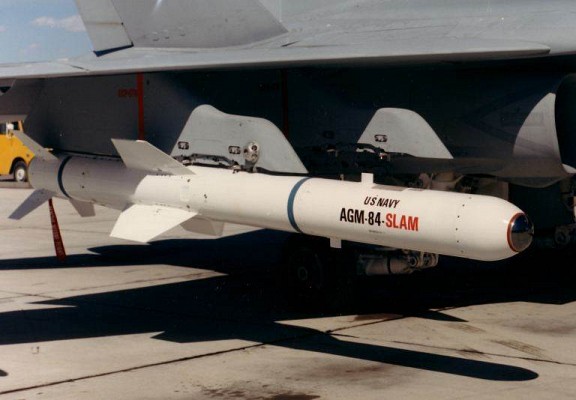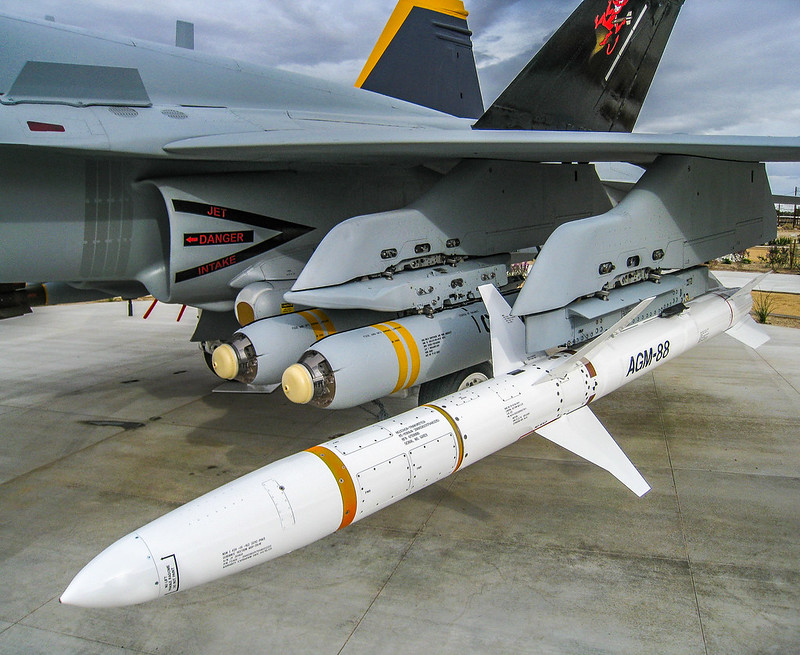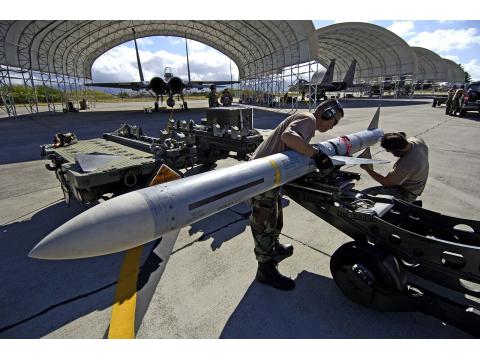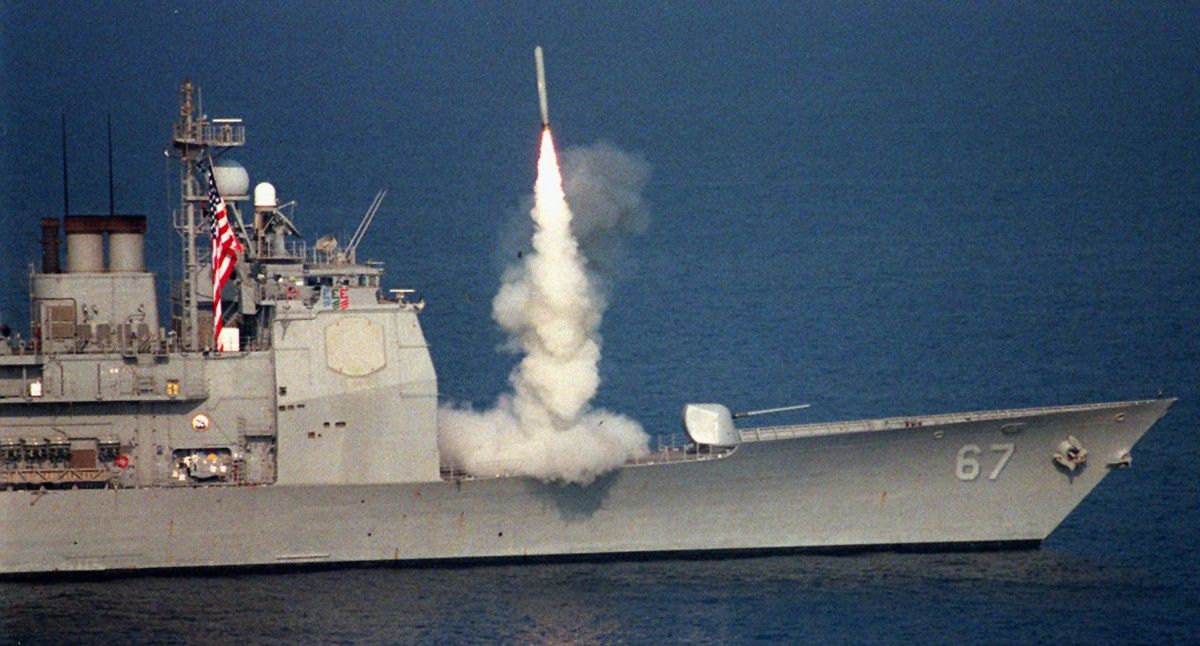USN Missile Situation
14 April, 2020 | General News
Key Munitions for the USN in Northern Fury
As an example of the type of ‘Rabbit Hole’ I find myself exploring, here are some thoughts on US Navy ammunition stocks as the bear on the Northern Fury scenarios and storylines. Building some of the later (and larger) scenarios in Northern Fury, a realization struck me that many of these missiles have long lead time production, relatively short shelf-life, huge expense and a high expenditure rate. The thought harkened back to the Shell Crisis on 1915, where the new weapon of the day—quick firing artillery—was expending the estimated war stock of artillery shells (1,000 -1,500 rounds per gun) in a few days. So I thought that a similar situation might exist with all the high tech weapons the US military was fielding.
Remarkably, most of the information about the relevant munitions is readily available online and, perhaps surprisingly, most of the stockpiles were quite robust. Please do not consider what follows a complete—or even thorough— study. I very quickly realized that most munitions in the US inventory would be quite sustainable and that production would likely replace expenditure in rapid order, though I’m not convinced that would be the same in other NATO countries. So, focusing on a few high end munitions, it was apparent that in most cases the limitations outlined here did not stem from lack of planning as much from lack of time. With the exception of the AIM-54, most missiles relevant to our story were still in production in 1994 and several had only been in service for a few months, or perhaps a year. Still, our conflict would likely create a shortage of available stock. To be true to the story and add more complexity to the NF scenarios, we’ll be using the below limitations going forward.
Usage: Twelve big deck carriers are operating to various degrees in the first month of the war. These include Big-E, Nimitz, Ike, Carl V, & TR are in the Atlantic/Med; Sara is in the Indian Ocean; Kennedy is first in the Caribbean then on SLOC duty; and GW, Abe, Kitty, Connie & Indy are in the Pacific. Two more are preparing (Ranger in the Pacific & John C Stennis in the Atlantic). Each of these carriers will be holding their basic loadout, which varies per munition. We’ve made calculations below for early March ’94, so during the first month or war at least eight carriers have had a complete restock (4 in each major Fleet), this is a gross estimation but will serve as a basis for stocks left for distributions to the Fleet. We’re also convinced that the average COMMAND player will have expended much more than these estimates in earlier scenarios.
One other factor for considerations is that many of the missiles below were designed to equip the upgraded F/A-18C. The upgrades to this airframe necessary to fire these newer weapons are ongoing in the early phases of the war in the Atlantic, but very few of these aircraft equip Pacific squadrons. As such, the bulk of these ammo issues are specific to the Northern battleset.
As a reminder, below are the Northern Fury USN Fleet boundaries:
Munitions under consideration:
AGM-84E: SLAM: This versatile missile entered design initial production in 1987 and series production began in 1989, ramping up from 72 that year to 250 per year in 1992. By war start 900 had been produced for the USN. A rough estimate has about 200 being expended in the first month of the war, with another 300 in carrier magazines. Distribution of the remaining 400 is:
2nd Fleet: 200
3rd Fleet: 12
5th Fleet: 12
6th Fleet: 24
7th Fleet: 150

AGM-88C: HARM: Although thousands were eventually produced, the ‘C’ model only entered service in 1993. In a stretch for Northern Fury timeline, introduction could occur as early as mid-1992, but under restricted deployment conditions. We will assume that approximately 1,000 AGM-88C are available and, because the bulk of the aircraft that use this model are based in 2nd Fleet’s theater, 80% of the stocks will be available in the Atlantic and Mediterranean. Another assumption is that the six carriers using them will have expended 300 of these missiles, with another 200 in stock. Distribution of the remainder is:
2nd Fleet: 400
3rd Fleet: 0
5th Fleet: 48
6th Fleet: 0
7th Fleet: 48

AIM-7P: Sparrow: This missile was an upgrade of the AIM-7M and was meant to be compatible (in regards to the software/hardware on the aircraft) with—and compensate for—the slow development of the AIM-120. Only 1,232 were ordered and these numbers included the RIM-7P ship-based SAM. In Northern Fury we will double this number and remove 800 for ship based systems, leaving about 1,600 for Naval Aviation. Most of the AIM-9P-capable aircraft are in the Atlantic and we’ll assume that half of the available stock has been fired or is onboard the carriers. This leaves 800 for distribution:
2nd Fleet: 600
3rd Fleet: 0
5th Fleet: 100
6th Fleet: 0
7th Fleet: 100

AIM-54: Phoenix: The AIM-54C is a large and complex missile. Each takes two years to produce and costs an estimated $920-$970 thousand. Various estimates state that about 2000 AIM-54C were in inventory at the end of production in 1993. The most generous estimate is that about 2,500 of these weapons were produced. Deducting about 10% for R&D, testing and range firing brings that estimate to about 2,250, which roughly agrees with other figures of available stocks. Assuming that production continued and was ramped up slightly, we can reasonably assume that about 2,800 AIM-54C (& ‘C+’) are available in Northern Fury. With 1,400 being consumed as the basic load of the fleet and another 800 being fired in the first month, we’re left with a grand total of 600 missiles available to resupply the Fleet. Allocation of remaining stockpiles as follows:
2nd Fleet: 320
3rd Fleet: 48
5th Fleet: 32
6th Fleet: 0
7th Fleet: 200

AIM-120A: AMRAAM: The ‘A’ model of this weapon became operational in 1991 with the Navy receiving the first deliveries in 1993. Production of this version ended in December, 1994, with 3,500 weapons received between the Air Force and Navy. If we assume that production was ramped up and that the Navy gets 1/3rd of that number, we can go with about 1,000 missiles available. Most of the aircraft capable of using them are in the Atlantic. Usage started slow, as only a few AMRAAM capable squadrons were in action, so an estimated expenditure and stock on the carriers amounts to about 500, leaving another 500 for allocation:
2nd Fleet: 350
3rd Fleet: 0
5th Fleet: 30
6th Fleet: 0
7th Fleet: 120

BGM-109C/D: TLAM/TSAM/SLCM: Collectively called ‘Tomahawk’ this family of missiles was fairly prolific, but the delivery of variants was tightly controlled. The Tomahawk Land Attack Missile (TLAM) was much more successful than the Tomahawk Anti-Ship Missile (TASM); both of these could be submarine-launched to become a Submarine Launched Cruise Missile (SLCM). A nuclear Ground Launched Cruise Missile (GLCM) version also existed. The nomenclature of these missiles depended on their launch mechanism: generically when fired from a ground launcher they are BGM-109, fired from surface ships they’re designated RGM-109, from submarines UGM-109, and from an aircraft AGM-109. Expenditure of these weapons would normally be controlled at the Operational level, so authority from Fleet HQ would be required. In scenarios the authorized expenditure is provided in the briefing and excess missiles are removed. The US (and UK) have historically used TLAMs liberally; prior to Northern Fury 357 were fired in the Gulf War and subsequent engagements in Iraq, with 278 being replaced with supplementary production. Numbers available at war start are:
BGM-109B, TASM unitary anti-ship: 350 (200 already converted to TLAM-C)
BGM-109C, TLAM unitary warhead: 1,575
BGM-109D, TLAM cluster munition warhead: 850
By 1994 both Block II and Block III versions were available, but the Block IIIs were just emerging and two of the major upgrade features were based on satellite linkage that became problematic on the first day of the war. The Block III version of the TLAM included five major improvements:
GPS guidance—however, most satellites were destroyed in the first day or so of the war, either by direct attack or debris, so this improvement was nullified.
Better computing power, which is not reflected in game.
Time on Target (TOT) planning, which is also GPS dependent.
Insensitive munition warhead, which reduces weight among other improvements to the explosive component.
An improved engine.
In game the key changes are a range increase from 675 nautical miles to 1,000, and a probability of hit increase from 85% to 90%. The GPS guidance entailed about a 20% range increase because of better flight path planning, while the reduced warhead weight and improved engine increased range by another 20%. The number of Block IIIs available in 1994 is hard to pin down, but would be relatively small. Since all TLAMs are allocated by scenario, the Block IIIs will be reserved for the end war phase when a limited replacement GPS constellation is deployed.
In due course we’ll go back over all scenarios and account for TLAM expenditure. We believe about 400 have been expended in the Atlantic and 45 in the Mediterranean, so we’ll retro-fit them all to be Block IIs and confirm the numbers are accurate. We’ll need to save about 600-700 for the last couple scenarios—just saying.

